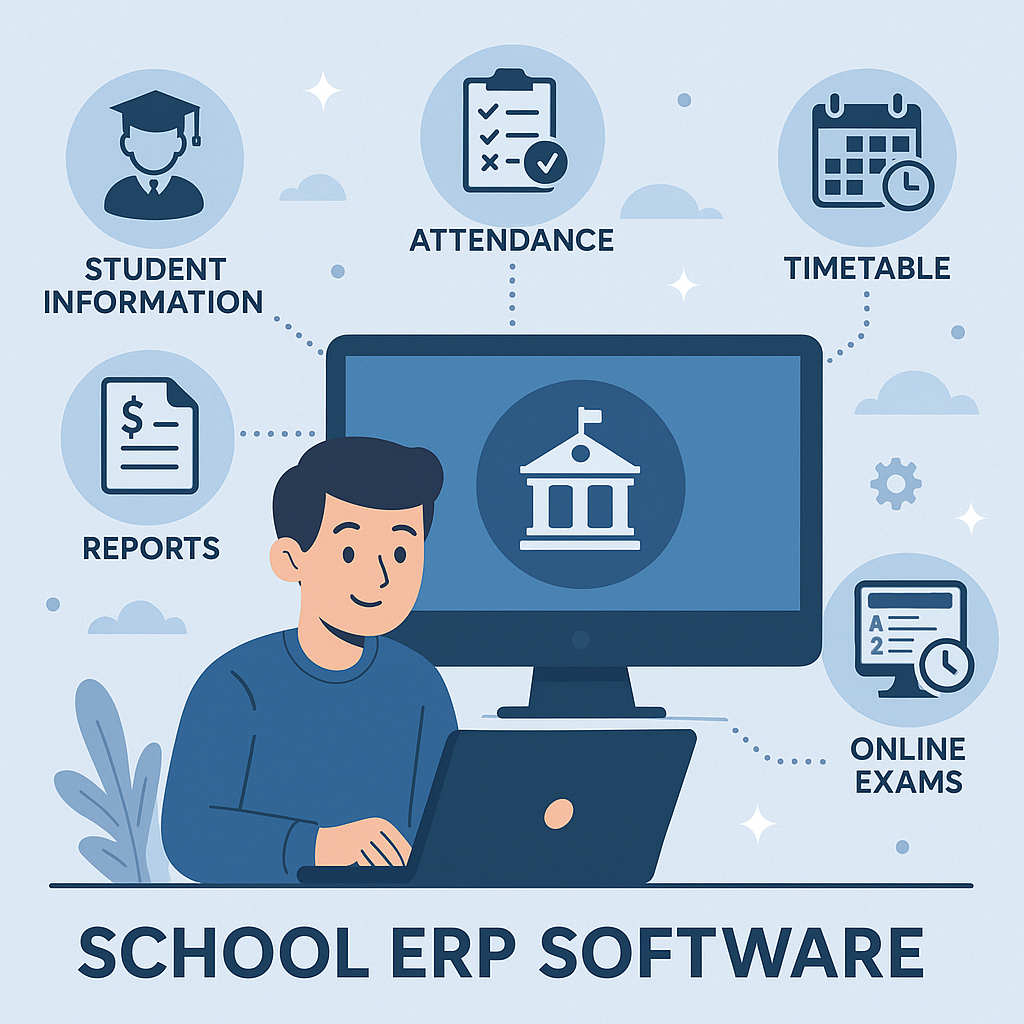School ERP: A Key Driver of Digital Transformation in Education

Strong 8k brings an ultra-HD IPTV experience to your living room and your pocket.
The classroom of the past—with chalkboards, manual attendance books, and piles of paper records—is fading fast. In its place, a more agile, data-driven, and connected educational experience is emerging. At the heart of this transformation is school ERP software, a technological solution that's proving indispensable for schools striving to stay ahead in the digital age.
While often operating quietly in the background, school ERP systems are reshaping how institutions function, from administrative operations to parent-teacher communication. But what exactly is a school ERP, and why is it such a crucial component of modern education?
Decoding School ERP: More Than Just Software
At its core, a school ERP (Enterprise Resource Planning) system is an integrated suite of digital tools that help manage everything from admissions and attendance to examinations and finances. Think of it as a school’s central nervous system—connecting every department and stakeholder while streamlining processes that used to be time-consuming or fragmented.
Far from being a luxury, ERP systems are now essential infrastructure for educational institutions navigating a digital-first world. They replace disconnected spreadsheets, outdated paper files, and endless manual work with a single, intelligent platform.
The Real-World Problems It Solves
To appreciate the true value of ERP in schools, it helps to consider the challenges many institutions face daily:
Administrators are buried under paperwork and redundant data entry
Parents lacking visibility into their children’s academic progress
Teachers are juggling lesson plans, grading, and school-wide communications without proper tools
Students are missing timely access to schedules, assignments, or academic updates
School ERP software addresses these issues head-on by automating workflows, centralizing data, and creating real-time communication channels. The result? A more agile, efficient, and transparent school environment.
Key Benefits for Stakeholders
For School Leaders:
ERP platforms provide comprehensive dashboards and analytics that reveal insights into enrollment trends, academic performance, and resource utilization. Leaders can make informed decisions backed by real-time data rather than relying on gut instinct or outdated reports.
For Teachers:
By automating routine tasks like attendance tracking and grade computation, ERP software frees teachers to focus on what matters most: teaching. It also facilitates collaboration with other staff and easy sharing of learning materials.
For Parents and Students:
Dedicated portals and mobile apps keep parents in the loop regarding attendance, grades, announcements, and school events. Students benefit from consistent access to their schedules, homework updates, and performance feedback.
For Administrators:
Whether it's processing fee payments, managing staff payroll, or generating compliance reports, ERP platforms drastically cut down on time and errors, making operations smoother and more transparent.
Features That Define an Effective ERP Solution
While many platforms claim to offer end-to-end school management, not all ERPs are created equal. Institutions seeking long-term value should look for:
Modular Architecture: Choose a system that allows you to implement only the features you need now, with the flexibility to expand later.
Data Security: Sensitive student and staff data must be protected through encryption and secure access controls.
Cloud-Based Accessibility: Enables remote access and reduces dependency on physical infrastructure.
Customization: Every institution has unique workflows; a good ERP should adapt accordingly.
User Experience: A clunky interface will hinder adoption. Opt for intuitive, well-designed dashboards and apps.
A Quiet Revolution with Measurable Impact
While the shift to ERP may not make headlines, its impact is substantial. A 2023 analysis by Education Technology Insights found that schools using ERP systems saw an average 30% reduction in administrative overhead within the first year of implementation. Additionally, many reported improved parent engagement and faster resolution of student-related queries.
These aren’t just efficiency gains—they directly impact the educational experience and outcomes. When a school spends less time on paperwork and more time on pedagogy, everyone benefits.
Implementing ERP: Challenges and Strategies
No transformation is without hurdles. Initial resistance from staff, the need for training, and budget constraints can all slow ERP adoption. However, these challenges are manageable with the right approach.
Successful implementation often hinges on:
Strong leadership support from school heads or boards
Clear communication about the benefits to all users
Phased rollouts to avoid overwhelming staff
Vendor support for onboarding and troubleshooting
The key is to treat ERP implementation as a strategic investment, not just a tech upgrade.
Final Thoughts: ERP as a Foundation for Future-Ready Schools
Digital transformation in education isn’t a passing trend—it’s a necessary evolution. As learning environments grow more dynamic and interconnected, schools need tools that can keep pace. School ERP software offers that foundation, enabling institutions to operate smarter, respond faster, and serve students better.
By choosing the right ERP platform and implementing it thoughtfully, schools can lay the groundwork for a future where administration is seamless, communication is open, and learning is truly student-centered.
Note: IndiBlogHub features both user-submitted and editorial content. We do not verify third-party contributions. Read our Disclaimer and Privacy Policyfor details.







